YouTuber Builds $120 Military-Grade Recon Drone That Streams To Tactical Software Used By U.S. Forces
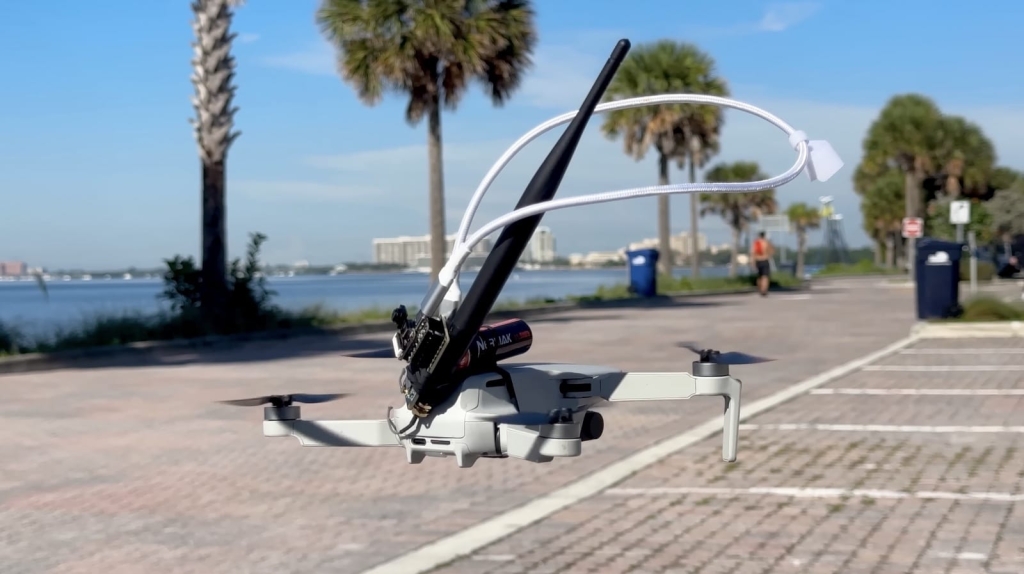
A popular tech YouTuber has reverse-engineered a $40,000 military-grade reconnaissance drone for just $120.07 using open-source hardware and off-the-shelf components. The DIY system successfully streams live FPV video directly into ATAK—the same tactical mapping software used by the U.S. military—proving that cutting-edge surveillance capabilities don’t require defense contractor budgets.

Data Slayer, a YouTube channel with over 266,000 subscribers focused on decentralized wireless communication systems, unveiled his latest project called “Scout” in a detailed video demonstration. The build represents the latest chapter in his mission to democratize technology and challenge the massive markups built into proprietary defense systems.
From $20,000 Radios to $120 Surveillance Drones
This isn’t Data Slayer’s first rodeo dismantling expensive military tech. He previously built “Houdini,” a $60 GPS dog collar that replicates a $999 commercial product, and “Haven,” a $106 mesh network radio system that matches capabilities of $20,000 military MANET (Mobile Ad Hoc Network) radios. His Haven system uses Raspberry Pi hardware with Wi-Fi HaLow technology to create fully portable, private networks without recurring fees or corporate control.
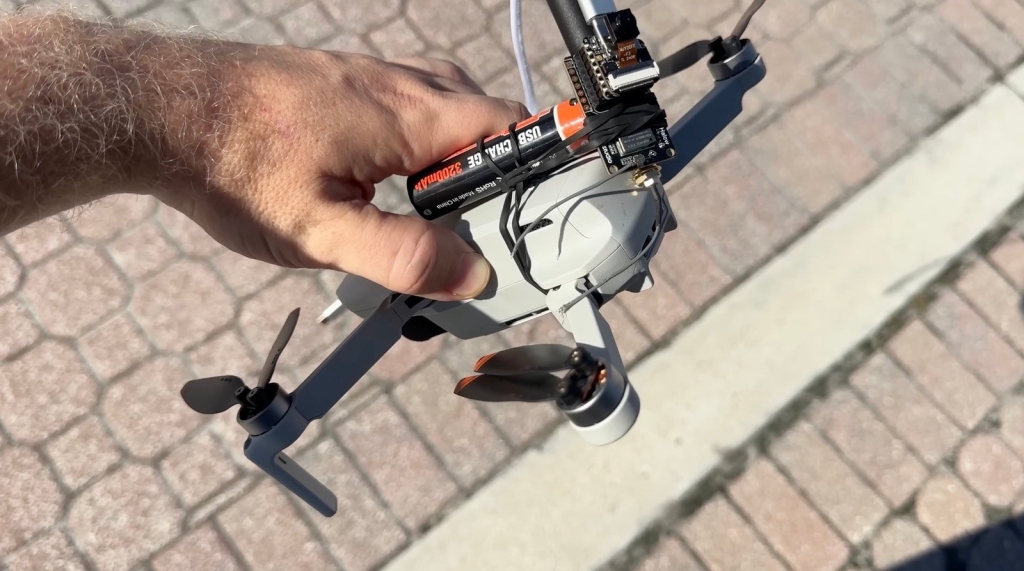
Now Scout takes the concept airborne, proving that tactical drone surveillance can be built in a home office for less than the cost of a tank of gas.
“Companies like Andril are raising billions right now to build drones so advanced they barely resemble anything we’ve seen before,” Data Slayer explains in his video. “But here’s the thing—for the cost of a tank of gas, I built one in my office that can stream live video into ATAK, the same tactical software used by the military.”
The Scout System: $120 of Pure Capability
Scout’s component list reads like a hobbyist’s dream and a defense contractor’s nightmare. The entire system consists of readily available parts that anyone can purchase and assemble.
The brain is a $6 Xiao MCU from Seeed Studio, essentially a tiny ESP32 board. For vision, Scout uses a bare-bones FPV camera with no frills—just raw video output. The communication link relies on a Wi-Fi HaLow hat that pushes IP packets over long distances using the 802.11ah standard. Power comes from a single 18650 battery, and custom firmware handles video streaming at 1280×1024 SXGA resolution at approximately 2 frames per second, specifically tuned for ATAK integration.
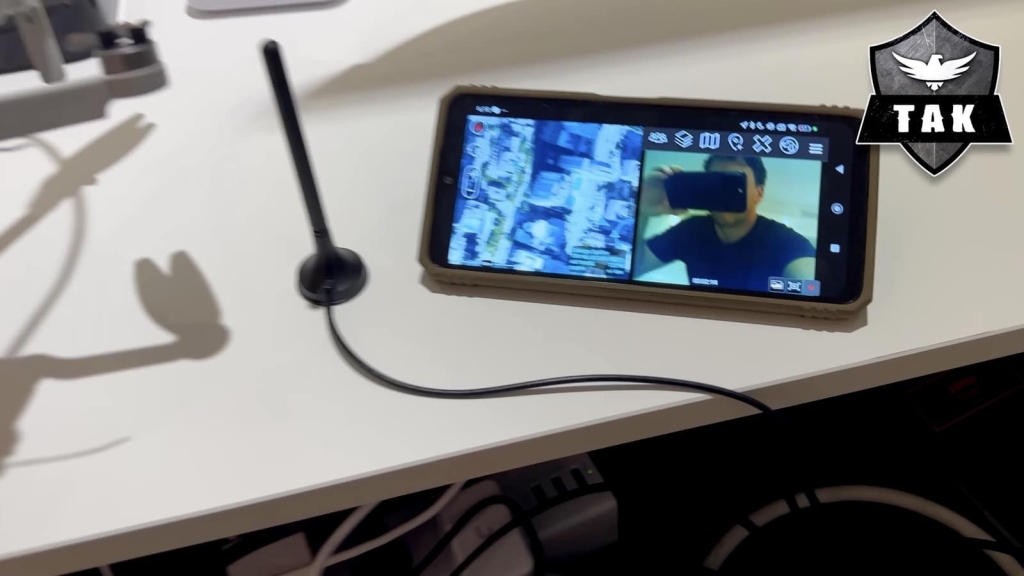
Total hardware cost: $120.07. The savings compared to a $40,000 defense-grade system: $39,879.93.
Data Slayer mounted Scout onto his “battle-worn” DJI Mini SE drone, which he describes as having crashed into trees, bounced off pavement, and survived Florida humidity. The Mini SE normally weighs under 250 grams (0.55 pounds), which exempts it from most FAA registration requirements. However, adding Scout’s payload pushed the drone over that threshold, requiring additional compliance measures.
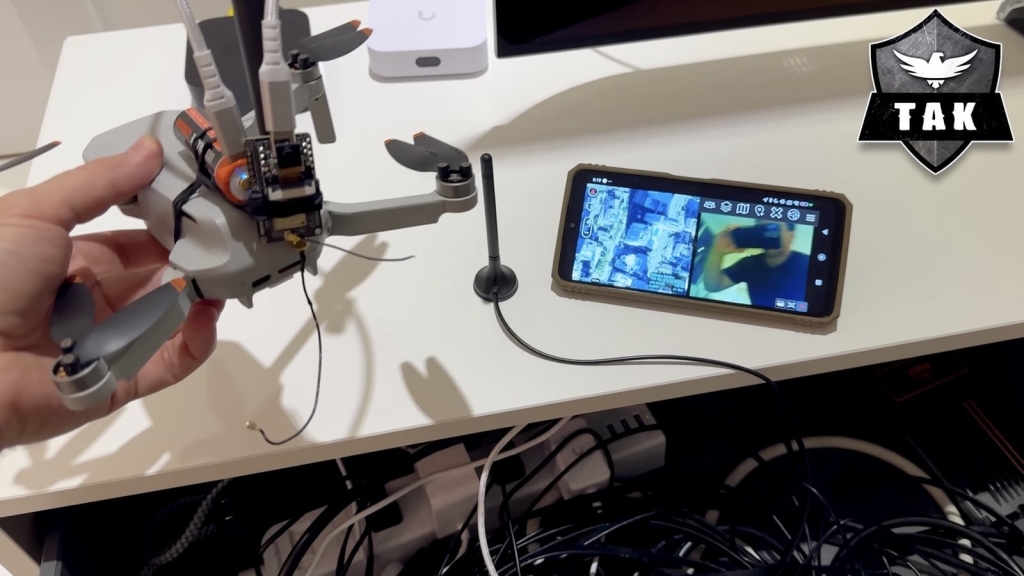
Staying Legal: Remote ID and FAA Compliance
Despite the tactical capabilities, Data Slayer made sure his build complied with FAA regulations. Once a drone exceeds 250 grams, it legally requires Remote ID—essentially a digital license plate that broadcasts the drone’s position, the operator’s location, and the aircraft’s serial number to nearby receivers.
The Mini SE doesn’t have Remote ID built in, so Data Slayer added a Ruko R111S Remote ID module, an FAA-compliant device that weighs just a few grams and runs about three hours on a charge. This keeps the operation legal while testing Scout’s capabilities.
“This is my first time putting a Halow node in the air,” Data Slayer notes. “I’ve already done plenty of tests flying Meshtastic nodes. A friend and I once managed to text over an encrypted channel, point to point, more than five miles in the sky.”
The compliance discussion is particularly relevant given the current regulatory climate. As DroneXL has previously reported, in the United States drones under 250 grams flown recreationally don’t require registration or Remote ID. But any commercial operation, regardless of weight, falls under Part 107 rules and must comply with all FAA requirements.
Wi-Fi HaLow: The Secret Sauce for Long-Range Mesh Networks
The technology enabling Scout’s capabilities is Wi-Fi HaLow (802.11ah), a sub-gigahertz wireless standard designed for long-range, low-power IoT applications. Unlike traditional Wi-Fi that operates at 2.4GHz or 5GHz, HaLow uses frequencies between 750MHz and 950MHz, providing significantly better range and obstacle penetration.
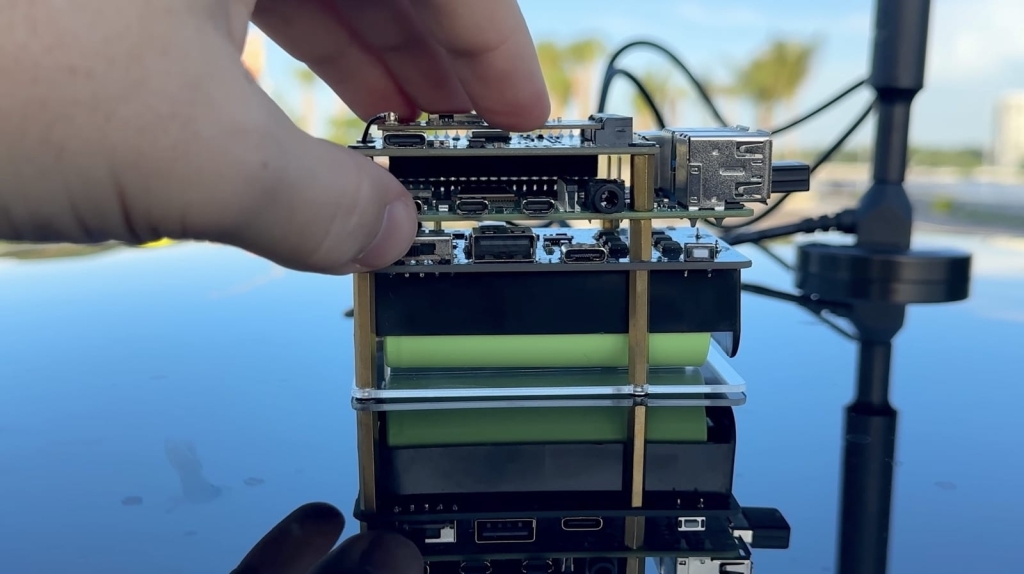
Recent tests have demonstrated HaLow achieving ranges exceeding 2,000 feet (610 meters) with data rates up to 15 Mbps—far superior to LoRa’s kilobit-per-second speeds while maintaining similar range characteristics. This makes it ideal for real-time video streaming rather than just text messaging.
Data Slayer’s ground network consisted of his Haven MANET system tied into Starlink for internet uplink. The setup handled both HaLow and traditional Wi-Fi, with his Android phone running ATAK connected to the network. When Scout took flight, it created what Data Slayer calls “an ephemeral cell tower in the sky”—an elevated node that restores mesh coverage and extends range far beyond what ground nodes can achieve.
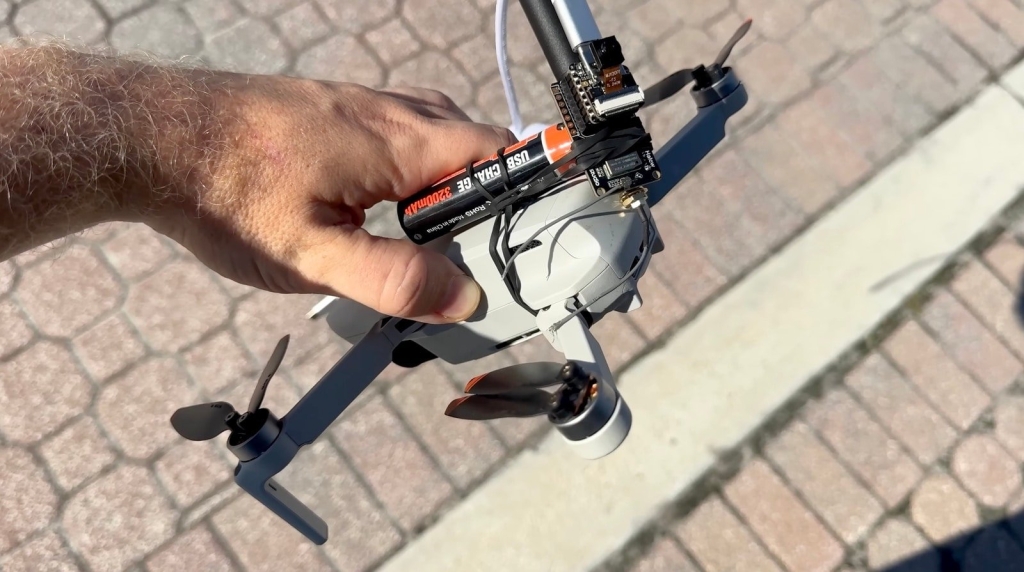
The field test proved successful despite challenging conditions. Scout held its connection at 60 feet altitude and successfully streamed video into ATAK. Even when the drone’s propeller sliced straight through the HaLow SMA connector—physically damaging the antenna—the system continued functioning.
“It still worked,” Data Slayer marvels. “$40,000 versus $120.07. Keep the extra $39,879.93 for, I don’t know, fixing potholes.”
ATAK Integration: Military Software, Civilian Access
The Android Tactical Awareness Kit (ATAK) sits at the heart of this achievement. Originally developed by the Air Force Research Laboratory in 2010, ATAK provides geospatial information, situational awareness, navigation, and real-time data sharing capabilities. The software is used by over 250,000 military and civilian personnel across Department of Defense programs, Department of Homeland Security, law enforcement agencies, and international partners.
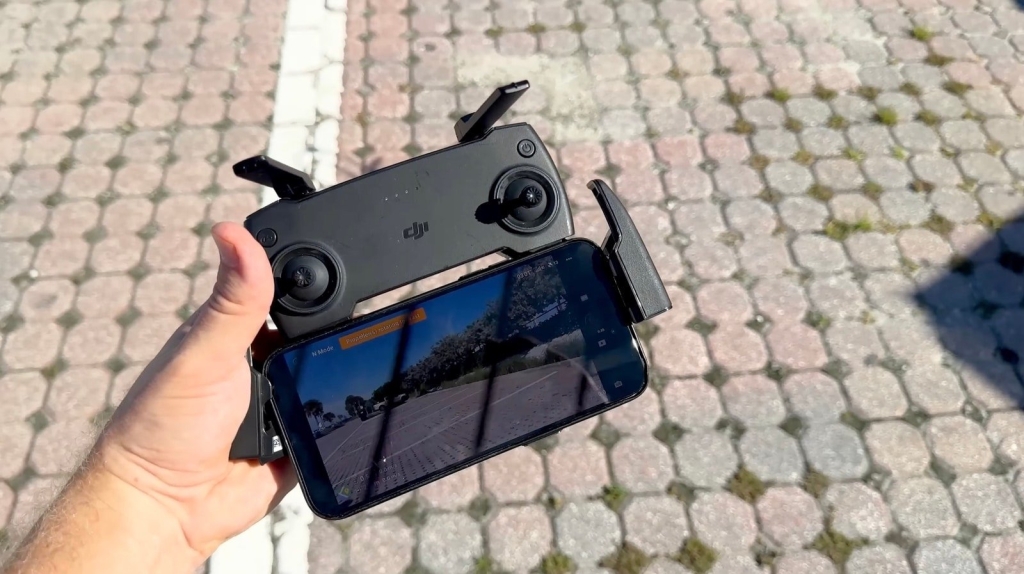
In 2020, the Defense Digital Service released ATAK-CIV (the civilian version) as open source on GitHub, making the tactical mapping platform freely available to first responders, search and rescue teams, and researchers. The software allows users to view friendly and enemy positions, share danger areas, coordinate casualty reports, and integrate drone video feeds—all overlaid on mapping data with real-time updates.
Commercial drone manufacturers like Skydio have begun integrating their proprietary systems with ATAK. The Skydio X10D, which sells for over $30,000, offers ATAK integration for military ISR (Intelligence, Surveillance, Reconnaissance) missions. But these systems remain locked to specific hardware platforms with proprietary control.
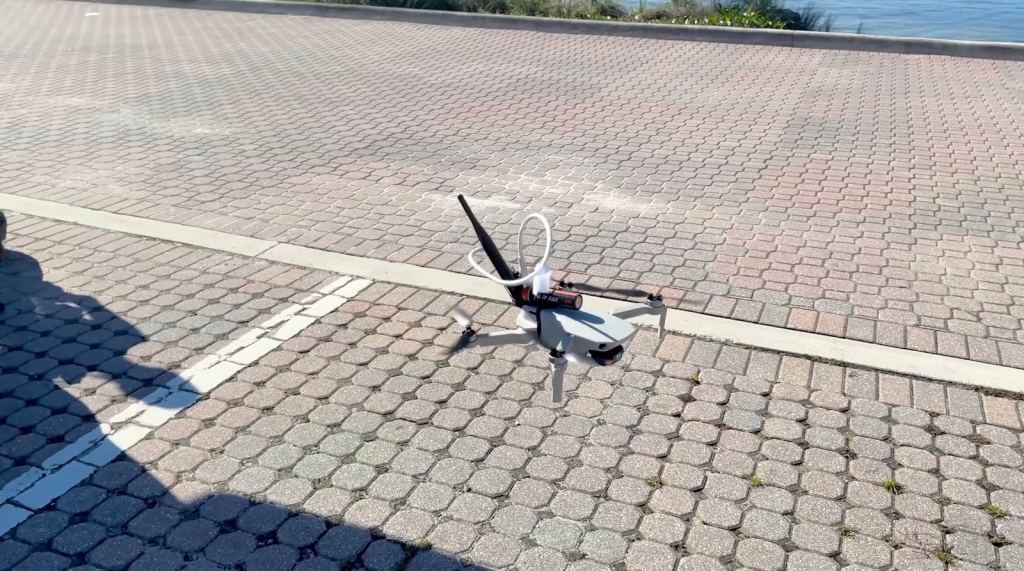
Scout’s achievement is different. By using open-source firmware and commodity hardware, Data Slayer created a system that works with ATAK without vendor lock-in, cloud dependencies, or subscription fees. It’s mesh-first rather than cloud-first, operating in communication-denied environments where traditional internet-dependent drones fail.
The Bigger Picture: Democratizing Tactical Technology
Data Slayer’s Scout project arrives at a pivotal moment for drone technology and national security policy. While the U.S. government continues debating potential bans on Chinese-manufactured drones like DJI over security concerns, this project demonstrates that Americans can build sophisticated surveillance systems themselves using open-source technology.
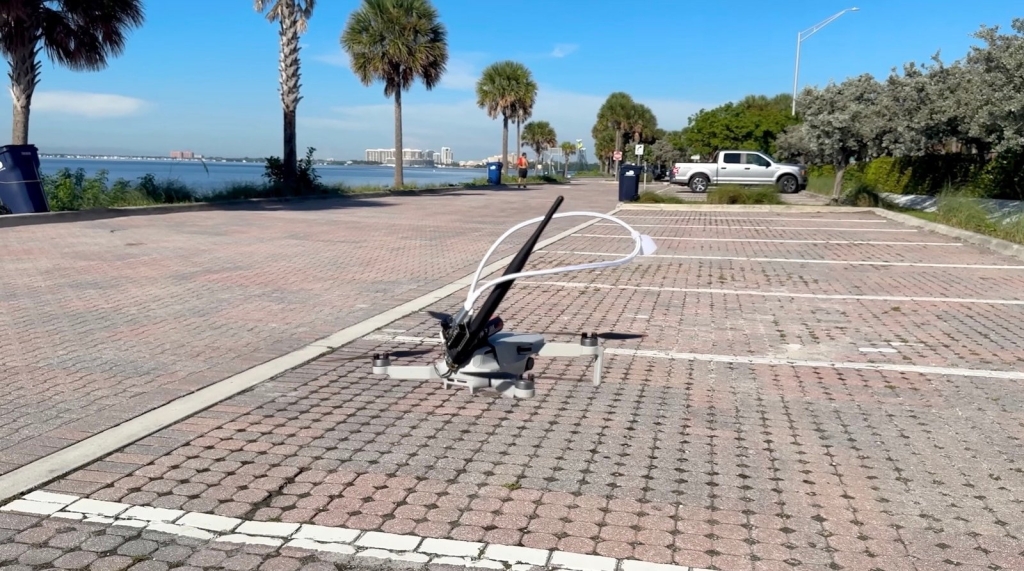
The irony isn’t lost on the drone community. As DroneXL has previously reported, much of the fear-mongering around DJI bans involves misinformation about existing drones being bricked or disabled. Meanwhile, grassroots builders are proving that the solution to concerns about foreign-manufactured tech isn’t bans—it’s empowering Americans to build better systems.
“Our devices spy on us, and every update seems to push us towards yet another monthly fee,” Data Slayer argues. “Which is why I’m so passionate about building a parallel tech stack—open source, inexpensive, capable hardware we can actually control.”
This philosophy mirrors the right-to-repair movement that’s gaining traction across technology sectors. From farmers fighting for the ability to repair their John Deere tractors to consumers demanding the ability to fix their own smartphones, there’s growing resistance to proprietary systems that lock users into vendor ecosystems.
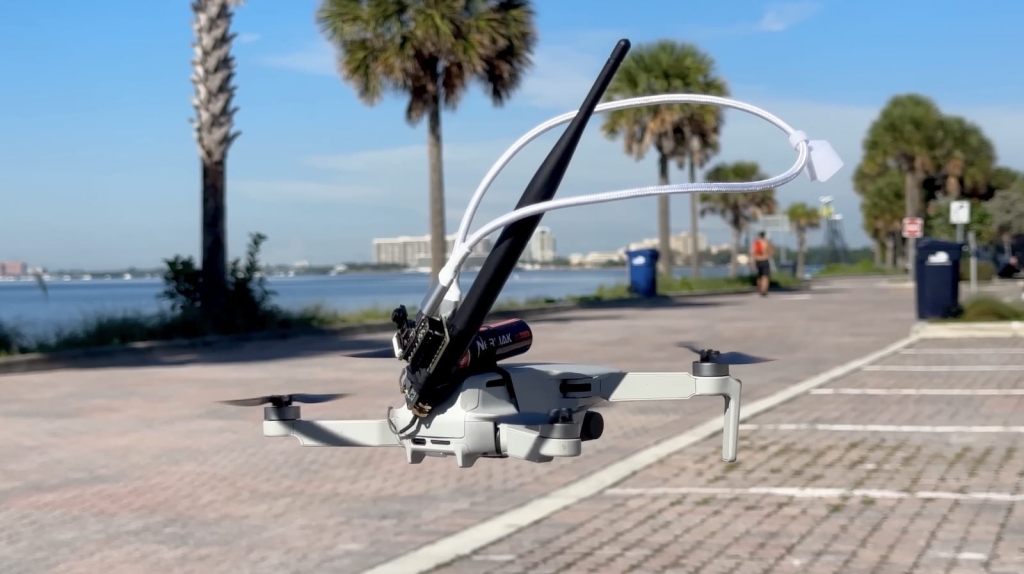
The drone world has seen similar grassroots innovation. Ukrainian volunteers have built thousands of DIY FPV drones for approximately $295 each—systems that can accomplish missions previously requiring $82,600 Javelin missiles. These civilian-built drones have become critical battlefield tools, demonstrating how determined individuals can create effective technology outside traditional defense procurement channels.
Real-World Applications Beyond Military Use
While Scout’s ATAK integration may sound like military overkill, the practical applications extend far beyond defense scenarios. Search and rescue teams, disaster response coordinators, wildfire management, agricultural monitoring, infrastructure inspection, and scientific research could all benefit from affordable, mesh-networked surveillance drones.
Consider a search and rescue scenario in a canyon where GPS signals are blocked by terrain. Launch a drone with Scout-like capabilities for a few minutes, and that airborne node reconnects the mesh network, reacquires missing team positions, and guides everyone back to base. Or imagine wildfire crews maintaining situational awareness across vast areas without relying on cellular infrastructure that often fails during emergencies.
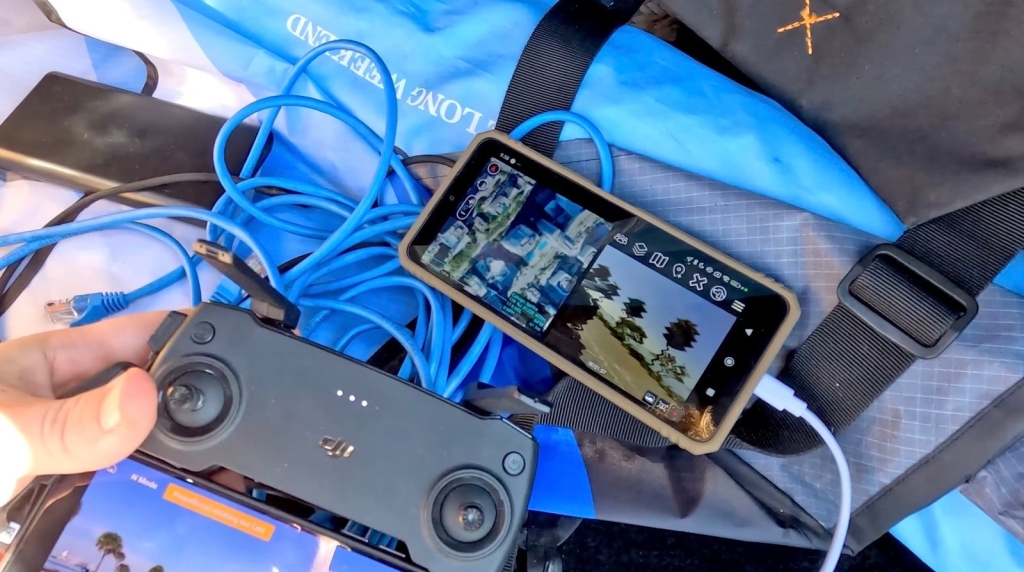
The technology also has implications for developing regions where telecommunications infrastructure is limited or non-existent. A mesh network of affordable nodes—both ground-based and aerial—could provide essential communications for medical emergencies, disaster relief, or community coordination.
Data Slayer has made his build guides available for those interested in replicating his Haven MANET and related projects, though the specific Scout firmware and configuration details weren’t included in the public video. His approach emphasizes education and empowerment rather than commercialization.
The DJI Dimension: Lifting Restrictions
Data Slayer’s video also touches on recent developments in the DJI regulatory saga. Earlier this year, as the U.S. government moved forward with plans to blacklist DJI over security concerns, the company quietly lifted most operator restrictions baked into their firmware.
“That means no more no-fly zones, no forced altitude limits, and no automatic grounding,” Data Slayer explains. “Their drones can now fly just about anywhere with almost zero guardrails, which technically bolsters our cause, but also puts the onus on the drone operators to be smart about what they’re doing in the sky.”
This shift underscores the complexity of drone regulation in 2025. While government agencies debate national security implications of Chinese-manufactured hardware, the practical reality is that responsible operators—whether flying DJI, DIY, or American-made systems—must understand and comply with airspace rules, Remote ID requirements, and safety protocols.

DroneXL’s Take
The Scout project represents something bigger than just another DIY drone build—it’s a proof of concept that challenges fundamental assumptions about who can build tactical technology and how much it should cost. When a YouTuber can replicate $40,000 military capabilities for $120 in his home office, it raises serious questions about defense procurement practices and the massive markups that have become normalized in that industry.
But this isn’t just about exposing waste in military spending. It’s about democratizing technology that can save lives. The same ATAK-integrated mesh network that military units use for combat operations can help search and rescue teams find lost hikers, enable first responders to coordinate during disasters when cell towers are down, or allow researchers to monitor wildlife in remote locations.
The open-source ethos driving projects like Scout, Haven, and the broader Meshtastic community represents a fundamental shift away from the subscription-based, cloud-dependent model that dominates consumer technology. These builders are proving that ownership—real ownership, where you control the hardware, write the firmware, and decide how your data flows—is still possible if you’re willing to learn and build.
What’s particularly impressive is Data Slayer’s commitment to keeping his builds legal and responsible. Despite creating a system with obvious military applications, he ensured FAA compliance with Remote ID, discussed operational limitations, and emphasized the importance of responsible piloting. That’s the kind of approach that helps the entire drone community by demonstrating that innovation and regulation can coexist.
The timing couldn’t be more relevant. As Congress and regulatory agencies debate the future of drones in American airspace—from potential DJI bans to Remote ID enforcement to airspace restrictions—projects like Scout remind us that the solution to concerns about foreign technology isn’t necessarily prohibition. Sometimes it’s empowerment. Give Americans the tools, knowledge, and freedom to build their own systems, and they’ll create solutions that are both more capable and more aligned with their values.
What do you think about DIY tactical drones? Should more emphasis be placed on open-source alternatives to expensive proprietary systems? Share your thoughts in the comments below.
Featured Image Credit: Data Slayer / YouTube
